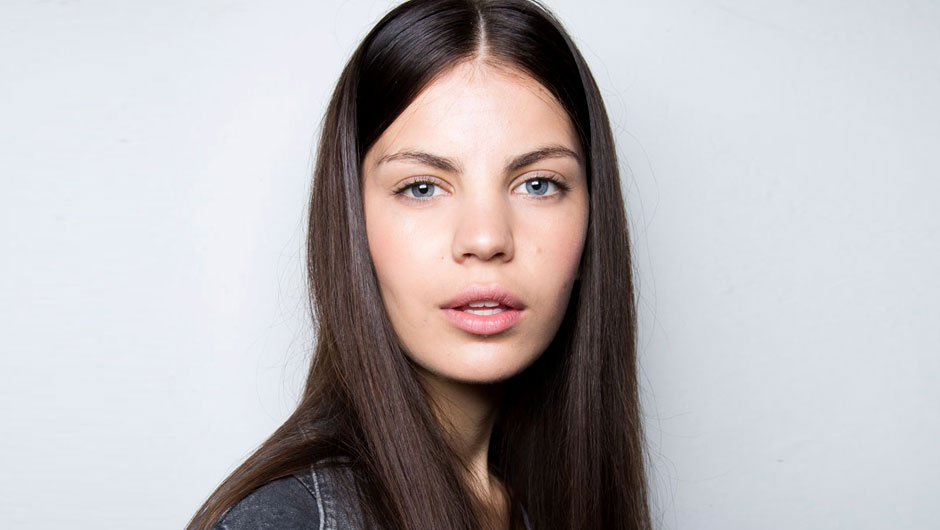This is an archived article and the information in the story may be outdated. Please check the time stamp on the story to see when it was updated last.

If you’ve ever had a keratin treatment, or know someone who has, you are well aware that, when done correctly, it eliminates 100% of frizz so you’re able to wash your hair and run out the door–no dryer or product needed. The downside to the treatment, however, is that your hair may become locked in a specific, straighter-than-you-imagined style and, far more importantly, it can be a risky endeavor–one that can carry both health risks and the risk of damaging your hair.
But information about keratin treatments is often conflicting. Some women swear by them, while others tell tales of irreversible keratin trauma. What’s the real deal? Jeff Chastain, celebrity hairstylist and creator of haircare line PARLOR, breaks down keratin treatments so you know exactly what to expect.
SHEfinds: First things first, what exactly is a keratin treatment?
Jeff Chastain: Keratin hair smoothing treatments are heat activated solutions that will give your hair more shine and less frizz for up to four months.
SF: How is the treatment performed?
JC: There are many types of keratin formulas, and all have slightly different applications. Generally, the client’s hair is washed using a clarifying shampoo, not conditioned, rough dried with hands and a flat brush, saturated with keratin formula, blow dried with a round brush, and then flat ironed several times using a 450 degree flat iron.
SF: How long does it take?
JC: I always tell clients to plan on being there for three hours. That allows a lengthy consultation, application and education on maintenance.
SF: How should women care for their hair after a keratin treatment?
JC: You must use a sulfate-free and sodium-free shampoo! The salt will break down the keratin faster. Also, I tell clients not to wash their hair any more than necessary to stretch out the length of time they can enjoy the benefits.
SF: How does keratin differ from Japanese Hair Straightening?
JC: The keratin smoothing treatment should not penetrate too much into the hair. It should sit topically so that it is smoothed on the outside. Some other treatments are actually more similar to the Japanese straightening in that they will penetrate the hair and cause permanent straightening. You must always ask before getting the service done.
SF: Will a keratin treatment remove body and volume?
JC: They can for several weeks. A lot of hair gets volume from fuzz and frizz, and if you eliminate that, you risk eliminating the volume that comes with it.
SF: Do keratin treatments change the texture of your hair?
JC: Only temporarily. After several months it should wash out and return to normal.
SF: Who is the ideal candidate for a keratin treatment?
JC: People who want low maintenance styling and/or have hard to control frizz.
SF: Are keratin treatments totally safe? Are there any risks involved?
JC: You risk getting a more permanent straightening treatment if you go the inexpensive route. You should always ask what product they are using and google it yourself beforehand.
SF: In general, what are the costs?
JC: Anywhere from $250-$500 depending on hair length and density.
SF: What are the different keratin “levels’ and who benefits from each?
JC: Some are more flattening, typically with more formaldehyde. Again, ask what product they are using and do your own reading to make sure it is what you want.
SF: What are your thoughts on alternative keratin treatments that don’t contain formaldehyde?
JC: Unfortunately, they do not work as well. When doing them in the salon, stylists will often get asked to redo the service as the client is rarely 100% thrilled with the results. If you only do it twice a year, I suggest going for the solution that contains formaldehyde for longer lasting, smoother results.
Just for good measure, we also checked in with Jane Meyer, a scientist and cancer researcher who started a hair repair line called Healthilocks Hair Repair. She cautions women to think about the chemicals being used to alter the composition of their hair before deciding if it’s worth the risk. “The ‘keratin’ part of the treatment is actually the safe part–keratin is protein that can help rebuild hair,” Meyer says. “Keratin is added in keratin treatments to try to repair the damage done by the chemicals. But in a keratin treatment the main part of the treatment is the chemical process. Because the chemicals are bad for people, this is regulated by the Occupational Safety and Health Administration (OSHA). Keratin treatments that use ingredients that are harmful, or that create harmful by-products when heated, create health hazards for salon owners and workers. OSHA requires salons that use such products to take special precautions and to follow the requirements of the Formaldehyde Standards for such products.”
For more beauty tips, check out Cold water is way better for your hair than hot water and Everything you need to know about getting hair extensions for the first time.
[Photo: Imaxtree]



























